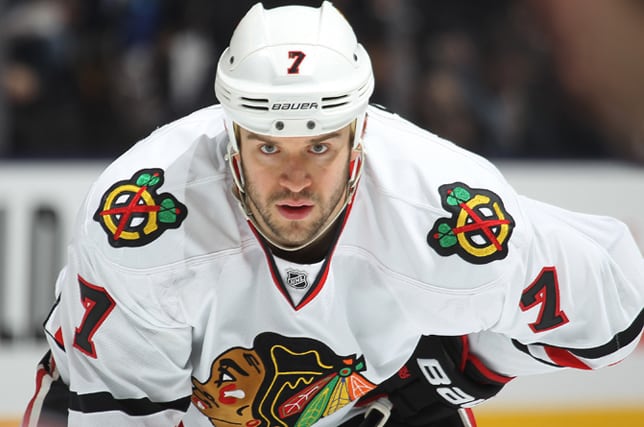
Hawks sign Seabrook to eight-year extension; now something has to give
Expect one of two things following the Seabrook extension: 1) Chicago’s roster in 2016-17 will feature a lot of prospects and reclamation projects; or 2) One or two of the Big 6 has to go.
 Hawks sign Seabrook to eight-year extension; now something has to give
Hawks sign Seabrook to eight-year extension; now something has to giveLast year, Brent Seabrook averaged 22:10 minutes per game; his ‘D’ partner, Duncan Keith averaged 25:33; Patrick Kane 19:51; Jonathan Toews 19:33; and Marian Hossa 18:33.
That quintet, assuming they’re all still around, better get used to playing a lot more than that.
After Seabrook signed an eight-year, $55-million extension ($6.875-million per year) that will kick in next season, the above five players, along with Corey Crawford, will have a combined cap hit of $44.7 million, or 62.8% of their overall allowance, using this year’s ceiling. In other words, unless the cap shoots up next season – and don’t count on that – the Hawks will have less than $30 million to fill out the rest of the roster (and that’s not taking into account Niklas Hjalmarsson’s $4.1 million, Artem Anisimov’s $4.6 million or Bryan Bickell’s $4 million).
So you can expect one of two things: 1) Chicago’s roster in 2016-17 will feature a lot of cheap prospects and reclamation projects, resulting in a top-heavy collection that will see a bunch of ice time. 2) One or two of the Big 6 has to go.
Here’s betting on the latter.
Of course it’s easy to say that Patrick Kane, with all his off-ice issues, is a logical chop. But that’s not looking at the big picture. It’s not unreasonable to say he’s this team’s most important player, with his ability to carry the puck and control play, and the fact the Hawks power play runs almost entirely through him. (And that’s said fully knowing that Toews may be the league’s best all-around skater.) If Kane isn’t charged after his well-publicized investigation this off-season, can GM Stan Bowman and the brass really justify dealing him?
Maybe. But from a pure hockey perspective, looking to deal Hossa and/or Crawford makes a lot more sense. Hossa turns 37 in January and is clearly on the second nine of his career, and his contract doesn’t expire until 2021. Crawford, meanwhile, has five more years left on his pact, and while he doesn’t get enough credit as an upper-tier talent, goalies are becoming more and more like running backs in the NFL: interchangeable parts. And lest we forget, though Crawford had his name inscribed into the Cup for the second time last season, he lost his starting job briefly in Round 1.
None of this is to say the Seabrook deal is a bad one. $6.9 million per season for a guy who’d be a No. 1 on most NHL teams is a relative steal. And when you have a player of that calibre, you don’t let him get away.
Is it odd that Seabrook’s cap hit will be $1.4 million higher than Keith’s $5.5? The optics are, yes, but don’t forget Keith’s was a 13-year deal that put $72 million in his pocket.
Bowman had his hands full this off-season to keep his collection cap compliant and competitive. But that was child’s play compared to the task he’ll face in the following months.







